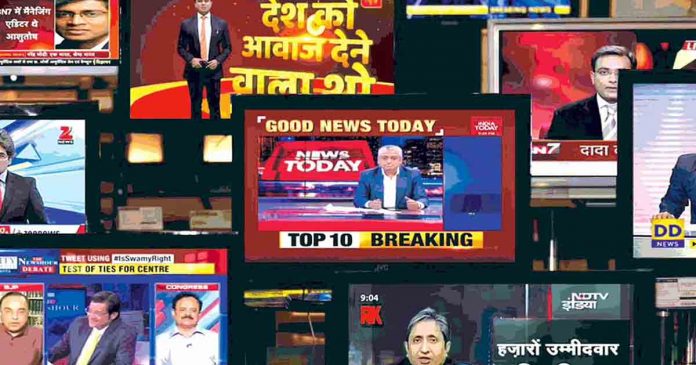
The report examined around 43 Indian print, TV, and digital media outlets for their coverage, the social location of the leadership, and the caste composition of journalists employed by the organizations.
Afnan Habib | TwoCircles.net
NEW DELHI — Upper caste groups hold about 90% of leadership positions in Indian media, with no scheduled caste (SC) or scheduled tribe (ST) in charge of mainstream media outlets, reveals an Oxfam India-Newslaundry report titled “Who tells our stories matters: Representation of Marginalized Caste Groups in Indian Media.”
The second edition of the report released at The Media Rumble, South Asia’s largest news media forum, also shows that General caste authors write every 3 out of 5 articles in Hindi and English newspapers while marginalized castes (SC, ST, or OBC) only contribute to around 1 out of 5 articles.
The report examined around 43 Indian print, TV, and digital media outlets for their coverage, the social location of the leadership, and the caste composition of journalists employed by the organizations. The research, conducted between April 2021 and March 2022, analysed over 20,000 magazine and newspaper articles, 2075 primetime debates with 76 anchors and 3318 panellists, and 12 months of online news reports.
Upper castes govern the media
While examining the domination of the upper castes, after collecting 190 samples from across Hindi and English newspapers and TV channels, the report revealed that “Around 91% of the positions were occupied by the general category, followed by 2.65% OBC presence and 1.59% SC presence.”
“Of the 62 samples collected from English news channels examined for leadership roles, 88.52% were from the general category, followed by 3.28% OBCs and 1.64% SC. Like newspapers, no people from the ST category held leadership positions,” the report said.
Newspapers and online portals
While analysing 14 Hindi and English newspapers, the study revealed that “Reporting of caste issues in print media appears to be dominated by journalists from the general category. While OBC journalists had 0-25% bylines, writers from SC and ST categories hardly accounted for bylines in any of the major newspapers.”
“Bylines in digital news portals were also dominated by journalists from general category with Newslaundry English topping the list with 68.5% bylines, followed by Firstpost and the Scroll.in.” The report said that journalists from the OBC category accounted for only 7-20% of the appearances, and the ST/SC category hardly had any contributions.
TV and magazines
More than half of the anchors from 8 news channels analysed for the study belong to upper caste groups, while no channel had an anchor from Dalit or Adivasi community to host the debate. The report said, “None of the mainstream Hindi news channels had anchors representing SC, ST communities. All anchors at News18, Republic Bharat, and Zee News were from the general category.” The report also revealed that Sansad TV was an exception, with “67% of its anchors from the OBC category.”
While analysing English News channels, the report found that “TV anchors belonging to the marginalized communities in the English news channels were heavily under-represented. Four of the seven channels studied did not have any anchor from the OBC category. India Today and Mirror Now had over 65% of journalists from general categories.”
While studying the caste composition of 12 Magazines, the report found that “In almost all magazines, more than half of the articles were written by journalists from the general category. Not a single magazine had over 10% representation of SC and had either zero or negligible presence of people belonging to ST categories.”
Commenting on the report, Dr Nookaraju Bendukurthi, an assistant professor at the Central University of Kashmir’s School of Media Studies told TwoCircles.net that “India’s caste system is a structure of social hierarchy that grants advantages to upper castes while allowing the favoured groups to repress the lower castes.”
“For decades, the caste system has made it nearly impossible for members of lower castes to exercise fundamental rights like education. Caste-based intolerance is prevalent throughout a variety of industries in India, not just the media,” he said.
Abhinandan Sekhri, CEO of Newslaundry, said, “The report captures the state of diversity in Indian newsrooms. Acknowledging the problem and diagnosing the fix is always the first step of any change. Hope editors and media owners can use its findings to make newsrooms more inclusive.”
The report suggests that media organisations be made more aware of caste issues, affirmative policies in the industry for marginalised groups be introduced, transparent hiring procedures be used, and equal and fair pay be implemented.
Afnan Habib is a freelance journalist based in Srinagar, Jammu and Kashmir. He tweets at @afnanhabib_

